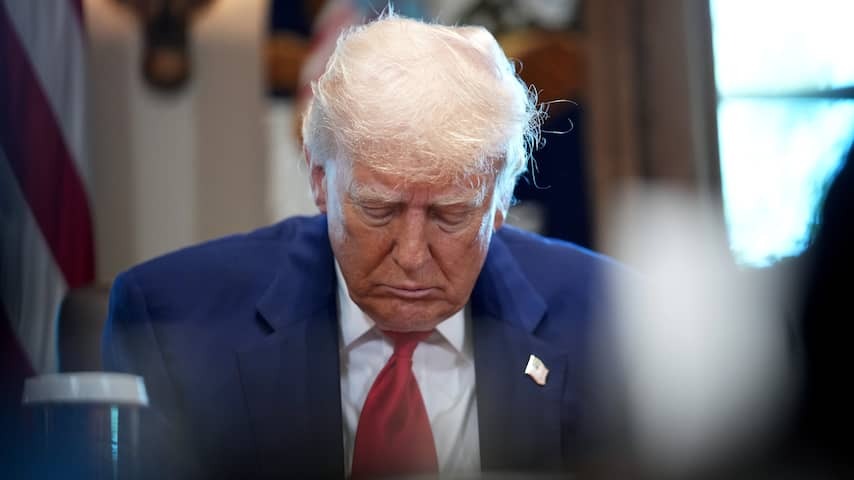
The European Union and the American government have reached a deal on Sunday aimed at preventing the two power blocs from entering a trade war. The US will impose an import tariff of 15 percent on most EU goods.
According to European Commission President Ursula von der Leyen, the deal will “bring stability” to trade between the two blocs. Trump is also positive. “We have reached an agreement. It’s a good deal for everyone,” he said Sunday after negotiations at his golf resort in Turnberry, Scotland.
The agreement prevents a higher levy of 30 percent. The agreement also includes agreements on $600 billion in investments by the EU in the US, Trump said. With this, the EU buys American energy and military equipment.
The agreement comes just before the August 1 deadline set by President Donald Trump and ends months of difficult negotiations. Trump introduced import duties on products from almost all countries in the world at the beginning of April. Initially, a rate of 20 percent applied to European goods.
The American president soon decided to take a break, presumably because financial markets reacted negatively. He reduced most levies back to 10 percent for an initial period of ninety days. At the beginning of this month, he moved that deadline to August 1.
Trump wanted to use that break period to conclude trade deals with many countries. But that is not going so smoothly yet. So far, he has only concluded agreements with the United Kingdom, Vietnam, Indonesia and Japan, and a preliminary deal with China.
Now there is also an agreement with the EU. It contains rules for trade in goods between the two power blocs, which amounts to 867 billion euros per year. It seems unlikely that everything has already been worked out in detail. This often takes years.
Higher levies threatened
There will be relief on both sides of the Atlantic. The fear was that Trump would come up with sky-high import duties of 30 or even 50 percent if both camps failed to reach a deal, and that the EU would respond with hefty counter-levies.
For example, Brussels recently drew up two lists of American goods that EU countries purchased last year for 93 billion euros. The EU would then levy high import tariffs on these goods if no agreement was reached and Trump would therefore impose high tariffs on European products.
But it won’t come to that. This does not mean that Europe and the US will not suffer from it. For example, European companies may lose part of their American customers because European goods become more expensive for this customer group. At the same time, Americans feel the levies in their own wallets if they continue to buy goods from the EU.
Conversely, European levies on American goods must be paid by importers in the EU. Consumers may soon notice something of this, because the prices of American products may increase.
Trump wants companies to move their factories to the US
Trump came up with the levies because he thinks they are beneficial to the American economy. He wants Americans to buy products from their own country more often and for foreign companies to move their factories to the US in order to create jobs.
Whether this will actually work out in practice remains to be seen. For example, American alternatives are not available for all European products. In addition, there are doubts as to whether many foreign companies will actually move their production to the US, because there is quite a bit involved.